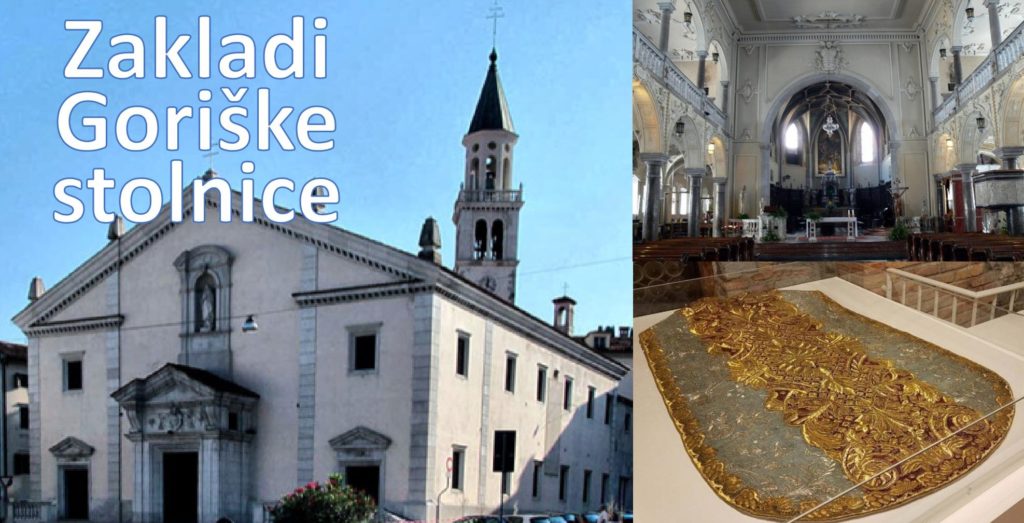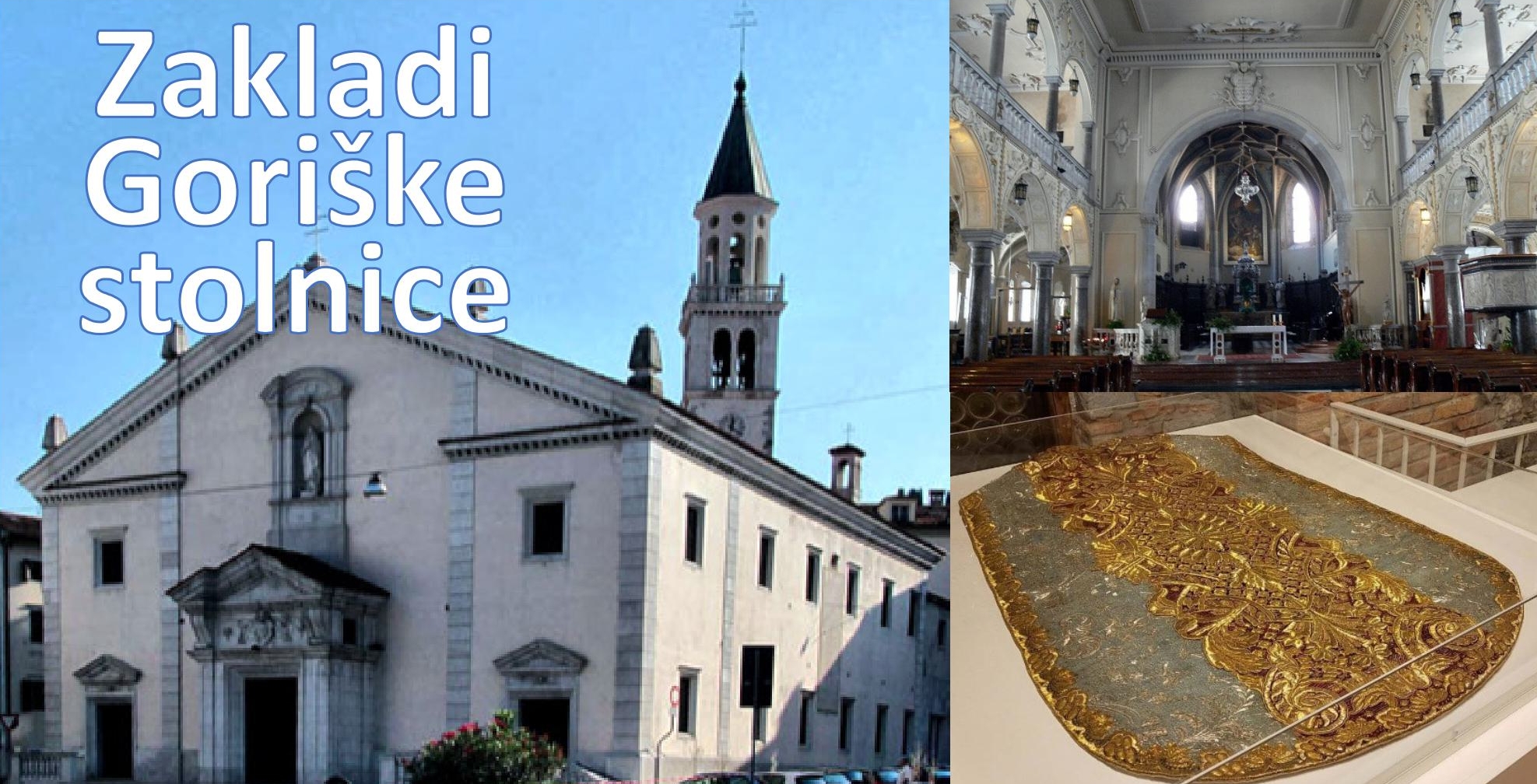On Thursday, November 28, 2024, the day of the consecration of the Gorizia Cathedral, Archbishop Carlo Redaelli of Gorizia will lead the Eucharistic service at 6:30 p.m.
A treasure of holiness
The treasure, the most precious thing, for the Christian community is the evangelical life, a beautiful and good life, a holy life or the gospel that we live in the concreteness of everyday life. There is nothing more precious than living a Jesus-style life in your own time. The history of the Church is full of these examples of holiness and the living gospel.
The relics that have been collected and venerated over the centuries are tangible testimonies, almost a reminder of the sanctity experienced by some concrete people: the saints are role models to emulate, friends to call and ask for intercession .
If the sanctity experienced is something precious, if the relics speak of this precious sanctity, it makes sense that the container of the relics also tries to express the preciousness of the contents.
A treasure of pastoral love
Another valuable aspect of the life of the Christian community is pastoral care, the charity of those who care for God’s people and offer an encounter with God’s mercy, especially through the sacraments. The sacramental presence of the shepherd, who wants to be a sign of Christ the Good Shepherd, and the Eucharist as an always available feast that connects with God’s mercy are precious treasures.
If pastoral care and the presence of God in the Eucharist are precious realities, it is reasonable that what is used for the liturgy also wants to express the preciousness of what is happening at the sacramental level.
A treasure that speaks of holiness and pastoral charity
This is how the treasure of the Gorizia cathedral was born, which from now on will have its permanent exhibition in the context closest to its original use, i.e. in the women’s gallery of the cathedral itself. The treasure of the cathedral does not consist of objects that are valuable in terms of material and workmanship, but they are valuable objects because they speak of the holiness experienced by our places and with which the Christians of Gorizia were nourished and because they speak of the pastoral charity of the pastors towards the Christian people of Gorizia .
A journey through history
With a tour of the treasure of the Gorizia Cathedral, you can embark on the history of sanctity and pastoral care. The exhibition begins in the right women’s gallery of the church dedicated to Saints Hilary and Tatian. The first part is dedicated to the presentation of various reliquaries. The part is dedicated to the Saints of Ogle, who have always inspired the Christian community along the Soča River. Saints from the first centuries of Christianity are above all martyrs, people who believe so much in the resurrection that they are ready to die in order to bear witness to it. But when the period of the martyrs is over, the history of holiness is not yet finished, in fact new ways of sainthood have appeared: shepherds, theologians, preachers, men and women of love. The cathedral treasure testifies to the sanctity of St. Anthony of Padua, St. Ignatius, St. Teresa of the Child Jesus, St. John Bosco. In the women’s gallery, you will be able to see reliquaries of different shapes and from different periods. Some of them are very original.
The exhibition continues in the room above the chapel of St. Acacia, which can be accessed in small groups. In this room, you are accompanied by the connection between the Ogle Church – the evangelizing mother of the entire Northeast, and the Gori community. It will be possible to admire the wooden and metal busts that connect the first Ogle shepherds, especially Mohor and Fortunato, Hilary and Tatian. We will understand the connection between the priory Solkan, where the parish church of St. Štefana, on which the Gori church community depended, which at that time received St. Martyrs Hilary and Tatian.
The itinerary takes you to the creation of the Archdiocese of Gorizia, which took place in the years 1751-1752, when the Patriarchate of Oglej was abolished and its territory was divided between the Archdiocese of Videm and Goriška in order to ensure more suitable pastoral care in the territory that was politically divided between Austria-Hungary and the Republic of Venice. To help start the diocese’s pastoral activities, the provincial nobles and Empress Maria Theresa presented a “dowry” to the first Archbishop of Gorizia, Karl Mihael Attems. This gift served and serves the celebration of the Eucharist in a solemn way, so that the preciousness of communion with the Lord is evident. This dowry includes clothes, including the blue clothes with which Saints Hilary and Tatian are represented in the Tominč altarpiece, a chalice, a pyxide, candlesticks, a cross… in short, everything necessary for the celebration of the Eucharist.
Viewing
The city community will be able to view the Treasures exhibition on Thursday, November 28, 2024 , as part of the celebration of the dedication of the cathedral. The cathedral has very ancient roots, certainly dating back to the 14th century, and possibly even earlier. 500 years ago, in 1525, it got its current architectural structure, thanks to the creation of a large arch that still opens towards the presbytery. In the first half of the 18th century, it was being prepared for an important church, with attention to beautifying the structure. It was badly damaged during the First World War, so it needed radical renovations. On November 28, 1942, Archbishop Carlo Margotti solemnly consecrated the cathedral.
On Thursday, November 28, 2024, at 6:30 p.m., Bishop Carlo will lead the Eucharistic service on the day of the consecration of the Gorizia Cathedral.
This is followed by the premiere performance of Ave Maris Stella for organ and baritone, written for this event by composer Marco Colella, who will play the organ. Eugenio Gallani Leggiadri will sing.
At 7:30 p.m., the opening of the Gorizia Cathedral Treasures exhibition will take place.
The exhibition was prepared by many individuals, the Friuli region, Julijska Krajina and the Church made their contribution.
The exhibition can be viewed on Saturdays and Sundays from 3 to 5 p.m.
Msgr. Nicola Ban, parish priest

